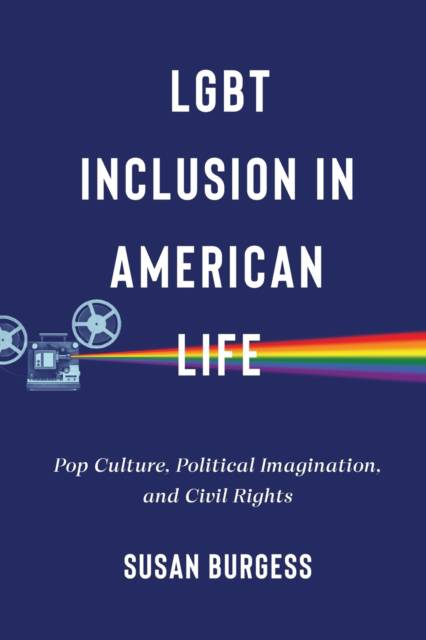
- Afhalen na 1 uur in een winkel met voorraad
- Gratis thuislevering in België vanaf € 30
- Ruim aanbod met 7 miljoen producten
- Afhalen na 1 uur in een winkel met voorraad
- Gratis thuislevering in België vanaf € 30
- Ruim aanbod met 7 miljoen producten
Zoeken
€ 38,45
+ 76 punten
Uitvoering
Omschrijving
A compelling explanation of the American public's acceptance of LGBT freedoms through the lens of pop culture
How did gay people go from being characterized as dangerous perverts to military heroes and respectable parents? How did the interests of the LGBT movement and the state converge to transform mainstream political and legal norms in these areas? Using civil rights narratives, pop culture, and critical theory, LGBT Inclusion in American Life tells the story of how exclusion was transformed into inclusion in US politics and society, as pop culture changed mainstream Americans thinking about "non-gay" issues, namely privacy, sex and gender norms, and family. Susan Burgess explores films such as Casablanca, various James Bond movies, and Julie and Julia, and television shows such as thirtysomething and The Americans, as well as the Broadway sensation Hamilton, as sources of growing popular support for LGBT rights. By drawing on popular culture as a rich source of public understanding, Burgess explains how the greater public came to accept and even support the three central pillars of LGBT freedoms in the post-World War II era: to have consensual adult sex without fear of criminal penalty, to serve openly in the military, and to marry legally. LGBT Inclusion in American Life argues that pop culture can help us to imagine unknown futures that lead beyond what we currently desire from contemporary politics, and in return asks now that the mainstream public has come to accept LGBT freedoms, where might the popular imagination be headed in the future?Specificaties
Betrokkenen
- Auteur(s):
- Uitgeverij:
Inhoud
- Aantal bladzijden:
- 232
- Taal:
- Engels
- Reeks:
- Reeksnummer:
- nr. 4
Eigenschappen
- Productcode (EAN):
- 9781479819751
- Verschijningsdatum:
- 21/02/2023
- Uitvoering:
- Paperback
- Formaat:
- Trade paperback (VS)
- Afmetingen:
- 152 mm x 226 mm
- Gewicht:
- 362 g

Alleen bij Standaard Boekhandel
+ 76 punten op je klantenkaart van Standaard Boekhandel
Beoordelingen
We publiceren alleen reviews die voldoen aan de voorwaarden voor reviews. Bekijk onze voorwaarden voor reviews.











